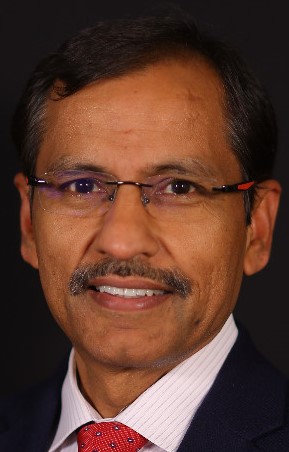Enterprises no longer see the network in the same light as their air conditioning; something necessary but a cost to be minimised. Instead, the network is now seen as a critical enabler of their business with connectivity vital for new applications, processes, business models and, ultimately, their future success. Communications service providers (CSPs) are therefore targeting the enterprise market with IT services. VanillaPlus managing editor George Malim asks Kamal Bhadada, the president of Communications, Media and Information (CMI) services at Tata Consultancy Services (TCS), whether CSPs can succeed here or whether enterprise IT will be the telecoms industry’s next big miss.
George Malim: What challenges do CSPs face in transitioning to become providers of services and value beyond connectivity?
Kamal Bhadada: CSPs are in a very unique position because in the future people will be more and more dependent on their services. This is because everything is digital, which means you need to be connected – it doesn’t matter who you are. We see four distinct business models for CSPs in this transition, all of which provide significant opportunities.
One is to become a smart connectivity provider, transitioning from the current operating model. This would entail using cognitive capabilities such as artificial intelligence (AI) and machine learning (ML) to operate their network more efficiently. This looks to be a very natural transition for a CSP.
Another opportunity is for a CSP to become a digital service provider. This involves building on the connectivity they already have into the enterprise to provide services they can use such as video and security services. As a result of enterprises becoming more digitally dependent there are more products CSPs can provide them.
A further model is for CSPs to become aggregators of new, digital services. Can they have customers come to them to provide the ecosystem of services? Can they be be like a CSP providing Netflix to a consumer and ensure the experience is seamless, secure, reliable and foolproof?
Finally, another model is to become a platform provider. Can CSPs create a platform for people to run services on top of, such as an IoT platform that enables new services to be created? Could they create a media platform?
All of these models can co-exist, the opportunities are not mutually-exclusive but they do require different DNA. It’s not just CSP DNA, it’s cognitive ability and you also need a product engineering mindset. And, in the market place scenario you need much more business development and alliance activity.
GM: What do CSPs need to change to address these opportunities?
KB: Irrespective of what they choose to do, CSPs have to move from the network mindset to the customer experience mindset. All four models are based on digital customer experience so the traditional mindset has to be broken. There is a big shift going on in which CSPs are making a lot of investment in and around the customer experience and we are partnering with them in these areas.
The focus is not just on business systems but about enabling experiences in the network as well. It’s about the seamless integration of systems and processes and CSPs are making good investments, which I give them a lot of credit for.
GM: Is there an upper limit in the size of enterprise that CSPs can serve? Is the opportunity really in the small to medium-sized business (SMB) sector?
KB: In the large enterprise market I’d say it’s not an opportunity because CSPs would get competed out of the game. SMBs, however, buy small assets and don’t have the volume to buy from large systems integrators but they do need to compete with large enterprises. We’re working with a large CSP on a strategy where we are the cloud services provider coupled with the CSP, aggregating 10-20 SMBs to help them migrate to cloud. We can aggregate each SMB’s volume and help the CSPs’ SMB customers migrate to cloud.
GM: How big an issue is the supply of workers that have the necessary skills to enable a CSP to transition into one of the four models you mentioned earlier?
KB: Talent becomes a huge issue. CSPs have built their businesses around buying spectrum and selling it to consumers. They buy in bulk and retail that capacity so they have to shift their mindset to building products and selling them to customers. It’s the product not the network that is the experience they are selling.
I think the talent required to do this is the biggest issue facing CSPs. It’s second even to capex. A different school of thought is required and there are two challenges inherent to that: Will they be able to transition their existing talent and will they be able to afford the balance sheet, which is already locked into debt?
The CSPs that are cashflow positive will have a seamless transition but those that are cashflow negative will have to restructure into an operating company (OpCo) and a network company (NetCo). The OpCo is asset light and can focus on products and services, while the NetCo becomes the, potentially part-nationalised, aggregator of two or three traditional telcos.






